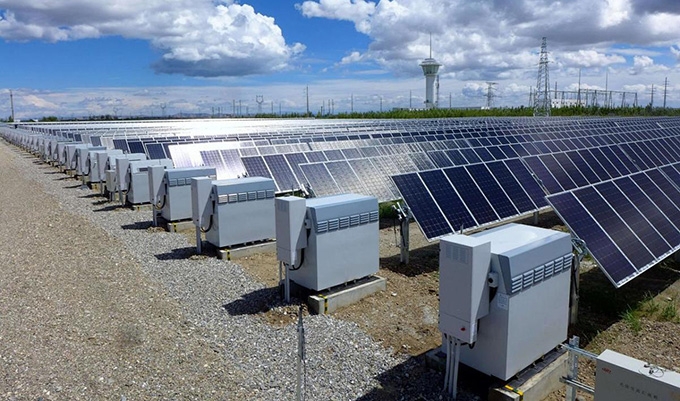 In the context of global climate change and increasing resource constraints, renewable energy—especially solar power—has become a crucial way to address energy challenges. Solar power systems are eco-friendly and help reduce dependency on fossil fuels, playing an essential role in achieving sustainable development. However, the intermittent and unstable nature of solar power presents challenges for widespread adoption. To overcome these issues, efficient energy storage is key, and deep cycle batteries have become the preferred choice for solar energy storage due to their unique performance advantages.
In the context of global climate change and increasing resource constraints, renewable energy—especially solar power—has become a crucial way to address energy challenges. Solar power systems are eco-friendly and help reduce dependency on fossil fuels, playing an essential role in achieving sustainable development. However, the intermittent and unstable nature of solar power presents challenges for widespread adoption. To overcome these issues, efficient energy storage is key, and deep cycle batteries have become the preferred choice for solar energy storage due to their unique performance advantages.
Structure and Challenges of Solar Power Systems
Solar power systems consist primarily of solar panels, inverters, controllers, and storage batteries. Solar panels capture solar energy and convert it to direct current (DC), while the inverter converts DC to alternating current (AC) for household or industrial use. The controller regulates battery charging and discharging to ensure stable system operation. Among these components, storage batteries are essential, as they enable continuous power supply during nighttime or cloudy days.
Solar systems face two primary challenges: how to supply power consistently during low sunlight conditions and how to efficiently store excess power generated during the day. Both issues point directly to the need for optimal storage equipment—hence, the choice of battery is critical.
Definition and Advantages of Deep Cycle Batteries
Deep cycle batteries, as the name suggests, are designed to be repeatedly charged and discharged at deep levels, with much greater discharge depth than regular batteries. These batteries are designed for prolonged, frequent charge and discharge cycles without significant performance loss. The main advantages of deep-cycle batteries include:
- High Capacity and Longevity: Deep cycle batteries typically have high energy density and longer cycle life. This means they can store more energy and maintain good performance after many charge-discharge cycles—essential for solar systems that need continuous, long-term power.
- Deep Discharge Capability: Regular batteries are not suitable for deep discharging, as it can severely impair performance. In contrast, deep cycle batteries are specifically designed for deep discharges, able to handle 80% or more of their capacity without degrading, which aligns perfectly with solar energy storage needs.
- Variety of Types: Deep cycle batteries come in several types, including Valve-Regulated Lead-Acid (VRLA), Flooded Lead-Acid (FLA), Lithium-ion, and Nickel-based batteries. Each type offers specific benefits, like lithium-ion’s high energy density and long life, or the cost-effectiveness and maturity of lead-acid technology.
- Eco-Friendliness and Sustainability: While lead-acid batteries face recycling and disposal challenges, newer types like lithium-ion batteries are becoming more sustainable. As technology advances, production and recycling processes are also becoming greener.
The Role of Deep Cycle Batteries in Solar Energy Storage
Deep cycle batteries offer significant advantages for solar energy storage applications:
- Continuous Power Supply: Deep cycle batteries store power generated by PV modules during the day and release it at night or during low-light conditions, ensuring an uninterrupted power supply. This is particularly valuable in remote areas, islands, or regions with frequent power outages.
- Increased Energy Utilization Efficiency: With deep cycle batteries, solar systems can store excess power during sunny periods and discharge it during peak hours or at night, thereby optimizing energy utilization.
- Cost Efficiency: Although high-quality deep-cycle batteries involve an upfront investment, their longevity and high performance make long-term operating costs lower. By reducing the frequency of replacements and maintenance expenses, these batteries contribute to lower overall system costs.
- Versatility: Deep cycle batteries are adaptable to various scales of solar systems, from small residential systems to large industrial and commercial setups. They provide reliable power support, meeting energy needs across diverse scenarios.

Market Trends and Selection Recommendations
Currently, the deep-cycle battery market is experiencing rapid development. As technology advances and costs decrease, high-performance batteries like lithium-ion are gaining market share. However, lead-acid batteries remain popular due to their technological maturity and lower cost.
Consider the following factors when choosing a deep-cycle battery:
- System Requirements: Choose the appropriate battery capacity and type based on the solar system’s scale and power requirements.
- Budget: Different types of deep cycle batteries vary widely in price, so choose according to your budget while ensuring good performance.
- Maintenance Costs: Factor in the battery’s maintenance needs, including regular inspections, cleaning, and replacements.
- Environmental Impact: Choose environmentally friendly and sustainable battery types to minimize ecological impact.
Conclusion
Deep cycle batteries are an ideal choice for solar energy storage due to their high capacity, long lifespan, deep discharge capabilities, and diverse options. By storing and releasing energy, deep cycle batteries ensure continuous power supply and efficient system operation, reducing operational costs and enhancing energy utilization efficiency. With ongoing technological advances and market maturity, deep-cycle batteries will play an increasingly important role in solar energy storage, contributing to a green and sustainable energy future.
Looking ahead, Home Power Inverter anticipates further innovations, such as higher energy-density battery materials, smarter battery management systems, and eco-friendly recycling and disposal techniques. These advancements will continue to drive the application of deep-cycle batteries in solar energy storage, providing strong support for global energy transformation and climate change mitigation efforts.
